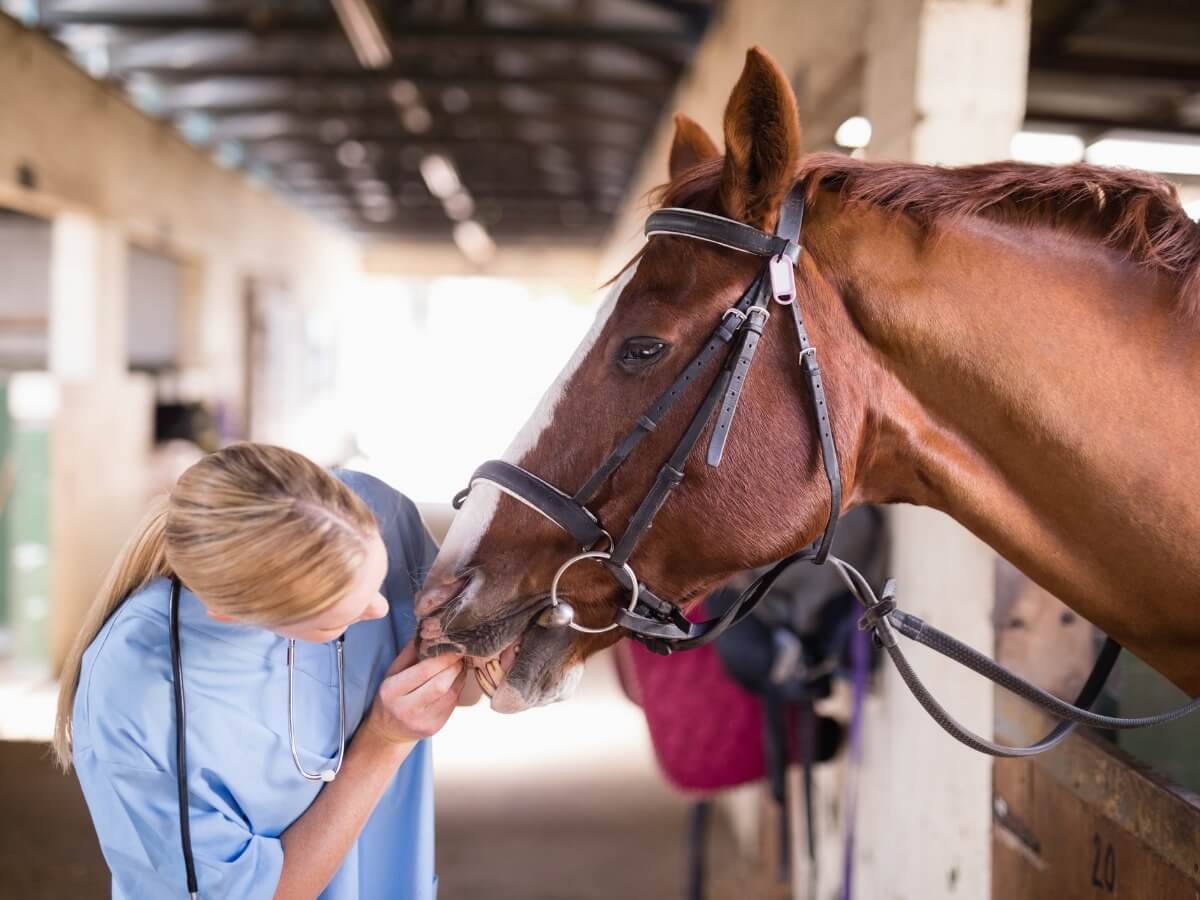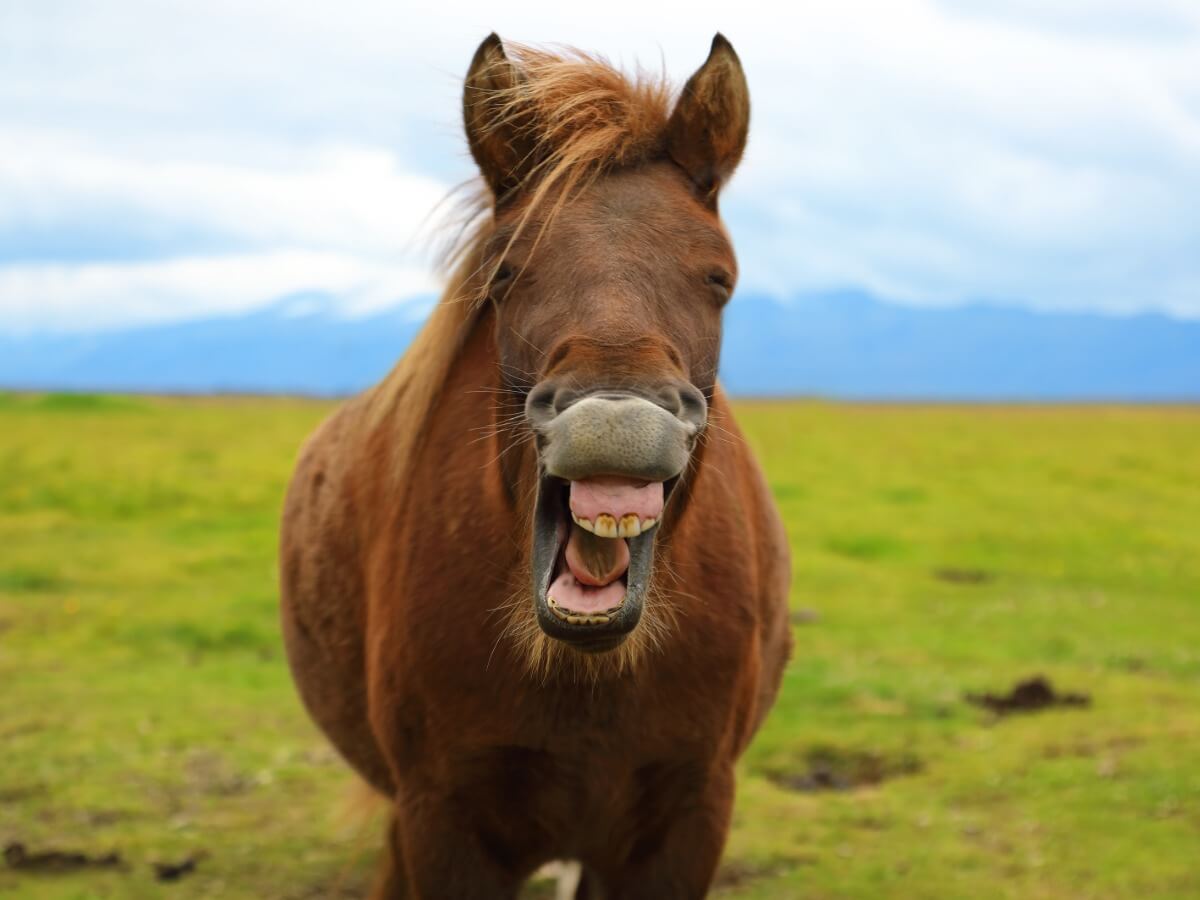Equine Summer Dermatitis: Causes, Symptoms and Treatment

Equine summer dermatitis is an increasingly common condition in horses around the world. It’s the most reported allergic skin disease in horses and one of the main reasons for visiting the vet, as it occurs frequently every summer. Its etiology is associated with the bites of certain insects in the environment, which proliferate in hot climates and with high relative humidity.
The treatment of this condition is multifactorial, as it requires the owner to control the presence of insects, manage the animal’s symptoms, and prevent future exposure to the insects. If you want to find out everything about equine summer dermatitis, read on.
What is equine summer dermatitis?
The term “dermatitis” refers to any type of allergic inflammation of the skin, as indicated by the MSD Veterinary Manuals portal. Dermatitis can be of several types. Some are caused by food, others by failures in the immune system, some by excessive exposure to the sun, and still others through contact with certain chemicals and many other things.
The most common symptoms are constant itching or pruritus. In addition, as inflammation progresses in the different layers of the skin, you can usually observe epidermal “scales” and crusts. If the condition reaches the innermost layer (the dermis), the animal will experience pain, purulent discharges, and hair loss outside of the molting season.
Dermatitis favors the development of secondary infections, as the skin is damaged and acts as an entry point for various pathogens.

The causative agent of equine summer dermatitis
There’s some disagreement about what triggers equine summer dermatitis. The Girovet veterinary portal states that it can be caused by exposure to the sun, the consumption of certain foods, by insect bites, or by many other allergic processes. However, most sources consulted agree that the condition is characterized by a specific trigger.
In general, it has been established that the disease is an allergic reaction caused by compounds in the saliva of invertebrates of the genus Culicoides. This taxon includes a group of Diptera flies that feed on horse blood and, in the process, cause the appearance of local lesions and transmit different diseases.
As studies indicate, the horse’s body can react to the bite by releasing type E immunoglobulins. This compound binds to its receptors and promotes the release of cytokines and pro-inflammatory molecules, which generates the allergic response per se. In other words, the animal’s immune system overreacts to a mildly harmful event.
Other blood-sucking arthropods outside the genus Culicoides can also trigger this hypersensitivity.
Symptoms
The most common symptom of equine summer dermatitis is the appearance of constant itching in the animal, followed by scabbing wounds on the skin and secondary infections. Other clinical signs that should be taken into account are the following:
- Blisters at the site of the bite
- Lesions with purulent discharges, especially around the head and ears
- Loss of hair in patches, due to the horse scratching
- Thickening of the skin in the affected areas
- A loss of pigmentation in the hair
According to studies, 75% of horses with equine summer dermatitis have moderate symptoms, 16% severe, and 9% mild. Undoubtedly, the situation becomes much more complicated when the horse develops a secondary infection due to the presence of injuries.
Diagnosis and treatment
Once the patient arrives at the veterinarian, the professional will ask the owner about all of the symptoms and perform a general physical examination. However, the diagnosis is quite complicated once the vet decides that it’s an allergy. This is because the problem lies in finding the type of allergen that has caused an increase in antibodies in the horse’s blood.
For this reason, it’s usually recommended to catch the flies or any type of arthropod that’s on the animal and take them to the clinic.
Antihistamines are the first route of treatment in almost all cases. These drugs block the receptors for histamine, one of the essential compounds in the development of allergic responses. After its administration, the horse’s condition should improve, but the expected results aren’t always obtained.
Antibiotics are also usually prescribed in the most serious cases, as this prevents secondary infections developed in the animal’s wounds from spreading through the body. There’s no cure for the allergic reaction itself, so the guardian should be prepared to treat it on future occasions.
How to prevent equine summer dermatitis?
Because the animal’s body can’t be prevented from responding to the bites, the best thing any owner can do is to prevent contact between the fly and the horse in the first place. To do this, the following tips are very useful:
- Limit horse exposure: These Diptera larvae develop in bodies of water. Therefore, you’ll need to keep the horse away from any ecosystem that contains puddles, rivers, or ponds. Dry meadows are the best option during the spring, as you’ll be able to avoid the exposure of the animal to the flies as much as possible.
- Purchase protective clothing and tights: There are special products for horses that protect all their skin from bites. In the most troubled times of the year, this may be the only 100% effective option.
- Use insect repellants: You’ll need to use repellants in the horse’s environment to kill all the flies that may be swarming in the area. Some of them are specific for equines and can be applied to their skin.
Beyond these preventive measures, it should be noted that keeping the horse’s skin healthy will prevent many dermatological symptoms from developing in the first place. A balanced diet and the application of specific creams for equines will help a lot on this front.

Equine summer dermatitis is a lifelong condition. If your horse has shown symptoms during the spring and summer one year, it’ll most likely experience them again the following year and throughout its life. Therefore, the best approach is always prevention; protect your horse and prevent them from being bitten by flies in the first place.
All cited sources were thoroughly reviewed by our team to ensure their quality, reliability, currency, and validity. The bibliography of this article was considered reliable and of academic or scientific accuracy.
- Seasonal recurrent dermatitis, Equimed. Recogido a 11 de agosto en https://equimed.com/diseases-and-conditions/reference/seasonal-recurrent-dermatitis
- Dermatitis estival equina: prevención y tratamiento, Girovet. Recogido a 11 de agosto en http://www.girovet.com/dermatitis-prevencion-y-tratamiento
- Dermatitis in horses, MSD Vet Manuals. Recogido a 11 de agosto en https://www.msdvetmanual.com/horse-owners/skin-disorders-of-horses/dermatitis-and-dermatologic-problems-of-horses
- Marteles, D., Odriozola, L., Verde, M. T., Conde, T., & Fernández, A. (2019). Assessment of serum allergen-specific IgE levels in horses with seasonal allergic dermatitis and recurrent airway obstruction in Spain. Acta Veterinaria Hungarica, 67(1), 11-21.
This text is provided for informational purposes only and does not replace consultation with a professional. If in doubt, consult your specialist.